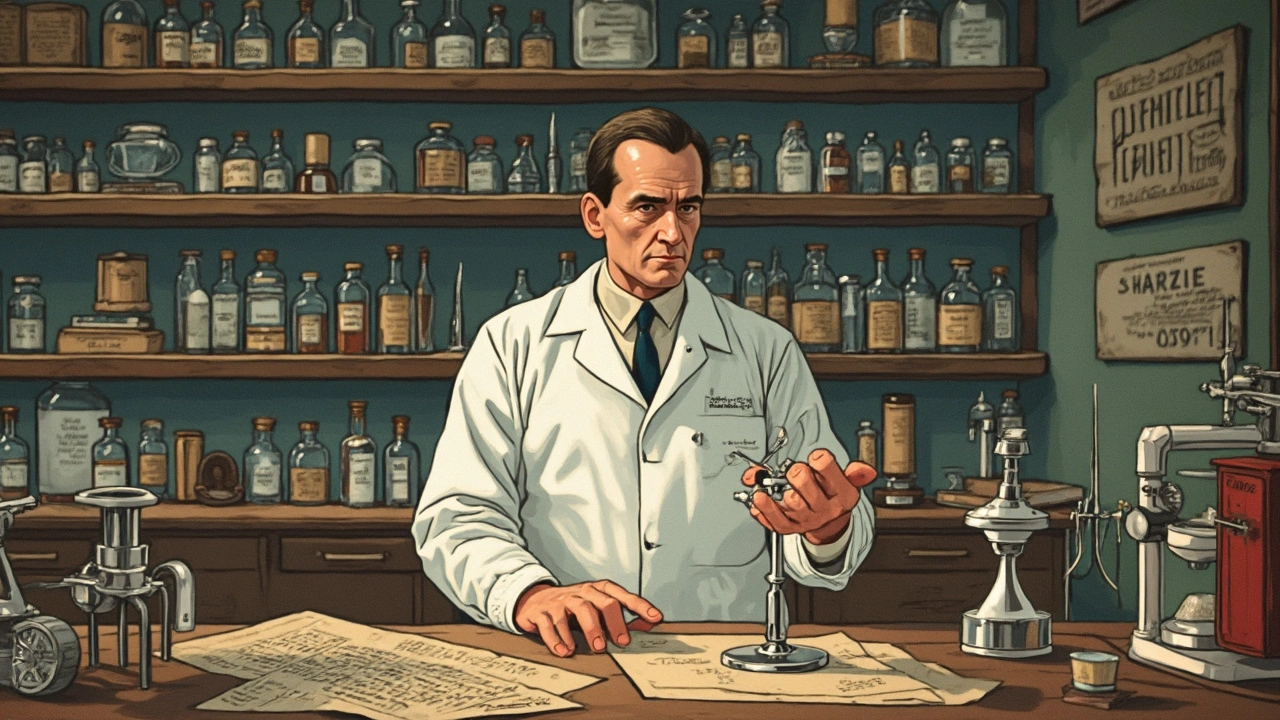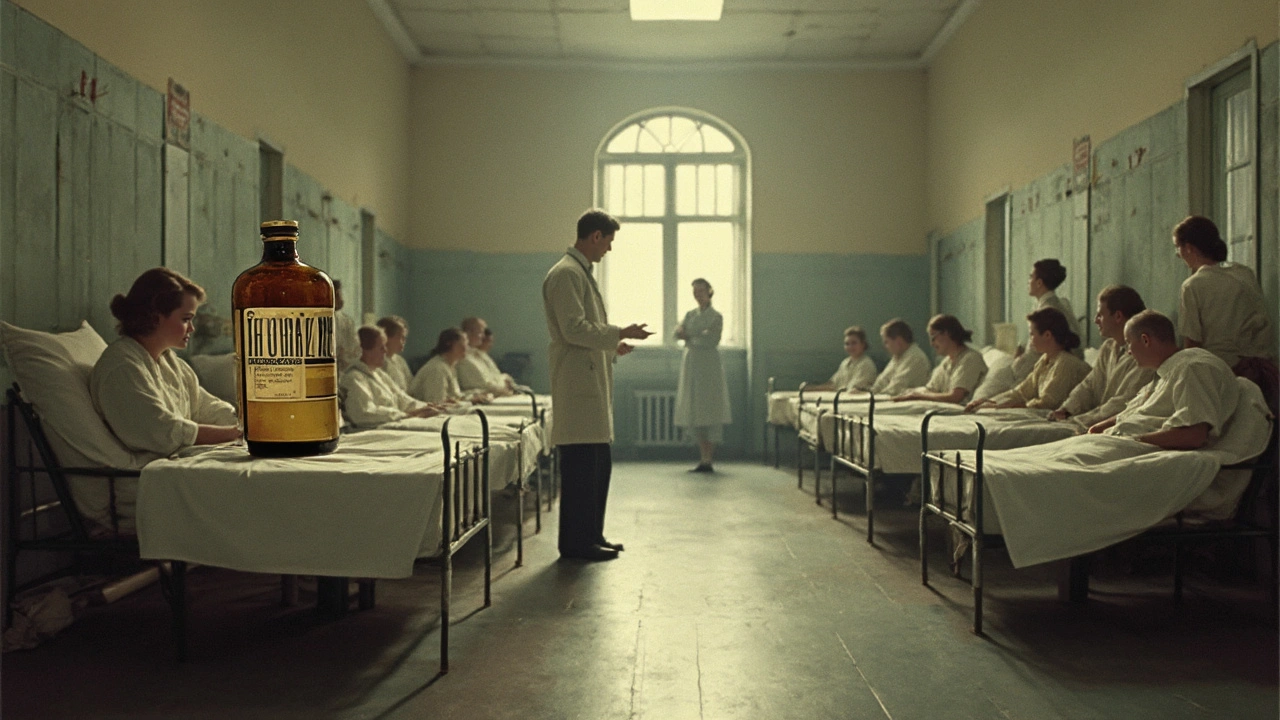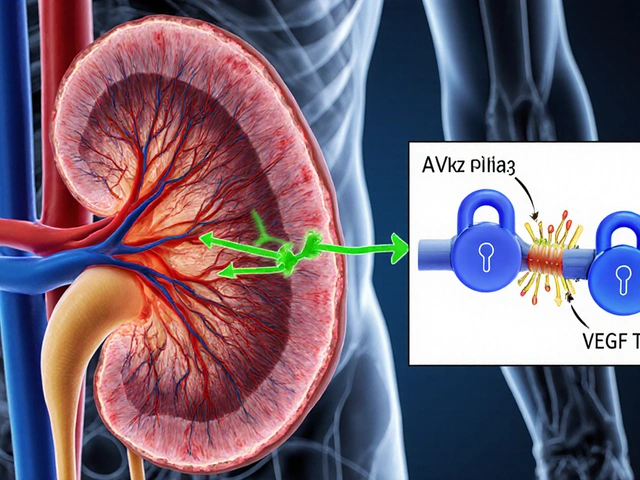If you ask most people about the breakthroughs that transformed psychiatry, few will mention a chalky, yellow pill from the 1950s. Yet, when Thorazine came on the scene, it forever changed how we deal with mental illness. Before this, asylums overflowed, straightjackets were common, and people with schizophrenia had bleak futures. But Thorazine wasn't invented for the mind at all. It was meant to help with allergies and anesthesia. When doctors noticed it calmed patients—really calmed them—it kickstarted the age of antipsychotics, both for better and worse.
The Origins and Discovery of Thorazine
In postwar France, a chemist named Paul Charpentier tinkered with a drug called chlorpromazine—what would become known as Thorazine—hoping it might boost the effects of anesthesia or treat allergies. Early on, no one thought about mental health. But while testing chlorpromazine on surgical patients, doctors noticed something odd: people became less anxious, more relaxed, even detached. A French surgeon, Henri Laborit, championed its use for calming nerves before surgery, calling it "artificial hibernation."
Laborit pushed psychiatrists to try the new drug on their most agitated patients. In 1952, psychiatrists at the Sainte-Anne Hospital in Paris gave chlorpromazine to people struggling with psychosis. It worked—not by knocking them out, but by turning down the dial on delusions and violent outbursts in a way no sedative ever had. Soon, Thorazine spread throughout Europe and the U.S., quickly becoming a staple drug in hospitals and asylums. Think of it as the first chemical key that could unlock a bit more control over psychosis, paranoia, mania, and delusions—problems that once seemed untouchable by science.
By the mid-1950s, the pharmaceutical giant Smith, Kline & French had secured approval for Thorazine in the United States. Banner headlines graced magazines; Time called it a wonder drug. Hospitals emptied out, not overnight, but at a pace that shocked administrators. Pilot programs showed that patients who'd spent years institutionalized could now function well enough to return to their communities, and that's when the word "deinstitutionalization" became a buzzword.
But here's a twist: Thorazine brought with it both hope and caution. It wasn’t a fairy tale. While some people found relief, others slid into flat emotional states or developed twitching, zombie-like side effects. Still, for those trapped by their own minds, Thorazine was seen as a lifeline and a ticket out of padded rooms.
How Thorazine Works: Brain Chemistry and Effects
What actually happens when Thorazine hits your system? The science is fascinating, but not magic. The drug blocks certain neurotransmitters—specifically dopamine—in the brain. Dopamine is like an internal messenger that’s heavily involved in thought, mood, and reward. In conditions like schizophrenia, the brain has too much dopamine activity, causing hallucinations or wild ideas. Thorazine acts like a bouncer at a club, keeping dopamine in check and turning down the noise in the brain.
The benefits can seem dramatic. Hallucinations fade. Distorted thoughts become clearer. Many patients who’d been terrified by voices or delusions reported being able to focus on ordinary things—eating, reading, even holding a conversation. Thorazine also mutes the senses a bit, taking the edge off anxiety or agitation, which is why it was called a “major tranquilizer.” This effect led to the sometimes-criticized “Thorazine shuffle”—a slow, stiff walk, because the same dopamine that helps with focus also helps control movement.
The trade-off for many people is significant. While the drug can control symptoms, it often brings a grab bag of side effects. Stiff muscles, tremors, uncontrollable facial tics—these are called extrapyramidal symptoms, and they’re pretty notorious. Some people develop tardive dyskinesia, a permanent twisting or grimacing that persists long after the drug is stopped. Drowsiness, weight gain, and dry mouth are also routine complaints.
Despite these issues, Thorazine opened the floodgates for other antipsychotics—haloperidol, perphenazine, and, much later, the “atypicals” like risperidone and olanzapine. Each new drug promised fewer side effects, but none erased the risks altogether. The basic blueprint, though, came from Thorazine: block dopamine and dampen psychosis, hoping the side effects don’t outweigh the benefits.

Thorazine’s Role in Mental Health Treatment
Imagine the world before psychiatric drugs—people with schizophrenia, mania, or severe agitation faced decades locked up, sometimes with crude treatments like insulin shock, lobotomy, or endless restraints. Thorazine didn’t just offer a technical fix; it kicked off a new philosophy for treating severe mental illness.
From the start, psychiatrists used Thorazine to treat schizophrenia, acute mania, severe behavioral disturbances, and even psychosis tied to dementia or delirium. Doctors also found it helpful for people with violent or out-of-control behavior, which made it a mainstay in psychiatric emergency rooms and crisis centers. Sometimes, it was given as an injection for fast results, other times as a pill or syrup for daily use.
Even today, Thorazine appears on the World Health Organization’s List of Essential Medicines, though it’s used less often in places with newer drugs. Certain areas of mental health, like rural clinics or low-resource hospitals, still rely on it, thanks to its low cost. For some people who can’t tolerate modern antipsychotics, it’s a fallback when all else fails.
When anyone starts a medication like Thorazine, it is usually under strict medical supervision. Dosing is a Goldilocks game—not too much, not too little—tailored to each person. The drug isn’t meant to turn people into zombies, though that stereotype lingers from decades of heavy-handed use in overcrowded asylums. The goal for most doctors is to dial symptoms down just enough for someone to think, feel, and plan their day. If side effects creep in, which can happen fast, the dosage gets tweaked or a different drug is tried.
What often gets lost in the history books is how Thorazine started a broader shift in how society treats mental health. By allowing people to return home, the drug fueled the push for outpatient care, day programs, and group homes. Families got their loved ones back, sometimes for the first time in years. Community mental health centers popped up everywhere, and the stigma around mental illness started to fade, or at least crack.
Interesting Facts, Risks, and Smart Use Tips
Thorazine is still around because it works, though it's rarely a first pick now. Here’s what stands out:
- First marketed in 1954, Thorazine rapidly became one of the most prescribed antipsychotics worldwide for decades, still used in some crisis settings today.
- Thorazine isn’t just for mental illness—it’s sometimes used to treat severe hiccups, nausea, and even as part of palliative care for terminal illnesses.
- The "Thorazine shuffle" really was a thing—patients sometimes developed a shuffling gait, one of the most recognizable side effects of early antipsychotics.
- Thorazine helped kickstart psychiatric “deinstitutionalization” in the U.S., leading to the closure of thousands of state mental hospitals throughout the late 20th century.
- Chlorpromazine, the main chemical in Thorazine, is on the World Health Organization’s List of Essential Medicines—proof of its ongoing importance in global healthcare.
As for taking Thorazine safely, there are a few tips worth keeping in mind. Always start under the guidance of a psychiatrist—never self-treat. It often takes weeks to see the full effect, so patience is important. Blood tests are sometimes needed, especially for those on high doses, since the drug can affect the liver or lower blood cell counts. Avoid alcohol and driving until you know how the medication affects you—it can make you dizzy or drowsy. If you notice muscle stiffness, tremors, restlessness, or odd mouth movements, tell your doctor right away. Regular check-ins are the best way to catch problems early and keep side effects in check.
Thorazine’s legacy is complicated: it brought hope, relief, and a real pathway out of the darkness for millions—yet it comes with a heavy load of side effects and hard choices. Still, it’s a cornerstone of modern psychiatry that deserves its place in the conversation about how far we’ve come, and how far we still have to go.





Dan Burbank
July 18, 2025 AT 15:21Ah yes, Thorazine – the granddaddy of all antipsychotics. It's fascinating how this one drug practically changed the landscape of psychiatric treatment, but let's not forget the baggage it came with. I mean, we can't just hail it as some miraculous messiah without acknowledging its notorious side effects, right? Sedation, tardive dyskinesia – these aren’t minor details, they're massive clinical considerations. And given how much we’ve moved past the early days of psychiatry, it’s almost quaint how Thorazine was the go-to before newer, somewhat gentler meds appeared.
Still, credit where it’s due. It broke ground in a field that felt hopelessly stuck. But I’m curious: does anyone else think the initial optimism might have overshadowed some of the more nuanced ethical issues related to medicating vulnerable populations heavily? Because history isn’t always as pretty as the textbooks make it appear.
Anna Marie
July 20, 2025 AT 23:10I'm really glad this post brought up Thorazine and its pivotal role in mental health care. It's important to consider not just the drug’s clinical impact but also the human side of its use—the lives it touched and sometimes complicated. From what I understand, although it had serious side effects, many patients had their symptoms managed in ways that truly improved their day-to-day existence.
Still, reflecting on Dan's point about ethical issues, there’s a delicate balance healthcare providers must strike between alleviating suffering and avoiding harm from side effects. It’s crucial that discussions like this remain empathetic to those who experienced both the benefits and drawbacks firsthand. Thank you for highlighting this important piece of medical history in such an accessible way.
Abdulraheem yahya
July 23, 2025 AT 06:58Very nice post! Thorazine really was a revolution in psychiatric medicine, in Nigeria and worldwide really. I remember reading how before it came, there were very few effective treatments for psychosis. Its introduction made a huge difference, but I also think it's vital to remember its limitations and the real challenges patients faced while using it.
Sure, the drug had a sedative effect, sometimes to the extreme, but for many, it represented hope and a path to some semblance of normal life. Let's also not forget that the development of Thorazine spurred the pharmaceutical field to innovate better and safer treatments. So even with its flaws, it has a legacy that indirectly benefits today's patients.
Would love to know more about how Thorazine’s use evolved in different countries over time, especially in less resourced settings!
Preeti Sharma
July 25, 2025 AT 14:46Ok, but have we really thought enough about how Thorazine pushed us into a sort of chemical straitjacket for mental illness? It’s the first, yes, but it also crystallized the idea that complex human experiences could be 'fixed' with a pill, which is a deceptively simplistic philosophy. Don’t get me wrong, science advances, but sometimes these milestones inaugurate problematic trends in understanding the mind.
In a way, isn’t Thorazine’s legacy more about societal control and normalization by sedation than true healing? Certainly, it was groundbreaking medically, but I challenge the notion that this was purely a benevolent discovery. There’s a grain of dystopia in that first antipsychotic’s story — and it deserves more examination beyond just the clinical facts.
Ted G
July 27, 2025 AT 22:35Sounds like Thorazine was just another cog in a grand conspiracy to keep people docile and manageable. Ever wonder why these powerful drugs were suddenly introduced? They could have had agendas beyond just health. I mean, controlling the minds of vulnerable people with chemicals? That can shape society to fit very specific ideas and control mechanisms.
We should be vigilant about the intentions behind such widespread medication campaigns. It’s not just about helping — it’s about controlling. Something to seriously consider when praising these medications.
Anyone else here suspicious about the timing and motivations behind such breakthroughs?
Miriam Bresticker
July 30, 2025 AT 06:23Omg soooo interesting!! Thorazine really did open the gates to the psych med world, right? Truely massive leap if u think about it😯 but like, the side effects? Not a small add-on, they kinda shaped the whole psychotropic meds game afterward!! Side effects and the way ppl experience meds r sooo underrated in the whole med history talks lol 🤷♀️
Also wondering how ppl back then felt about suddenly taking this 'magic' pill, probs all so confusing and scary? Does anyone know if there were stories from patients themselves from those days? That would b soooo valuable 👀💊💥
Claire Willett
August 1, 2025 AT 14:11I appreciate the detailed unpacking of Thorazine’s history here. Its pharmacodynamics and the way it modulated dopamine pathways really set the template for antipsychotic drugs that followed. The side effect profile, particularly extrapyramidal symptoms, remains a critical clinical consideration even now, despite the advent of atypical antipsychotics.
However, I do think it’s essential to maintain a clinical focus balanced with patient-centered care principles. The drug's impact on institutionalization rates and patient autonomy serves as a useful case study in psychiatric treatment paradigms.
Keli Richards
August 3, 2025 AT 22:00This is a really helpful breakdown. I’ve read about Thorazine before and saw how it was a breakthrough at the time, but your description reminded me of how complex these treatments really are. The balance between symptom management and side effects is huge, and I guess that’s why doctors always need to carefully tailor treatments for each patient.
I wonder how much patient input was considered when Thorazine was first introduced? It feels like nowadays shared decision-making is a big deal, but back then perhaps it wasn’t so much the case. It’d be interesting to see patient testimony from that era.
Ravikumar Padala
August 6, 2025 AT 05:48Honestly, I find the whole Thorazine story quite exhausting to process. It’s like the drug was hailed as a miracle not because it was, but because people desperately needed hope in psychiatric care. I’m skeptical about how much real progress was made with these early antipsychotics given their toxicities and side effects. Didn't they just mask symptoms rather than provide true healing?
Anyway, I guess it paved the path for better meds, but the era it represents is kind of stuck in history now. It's almost like clinging to it for nostalgia rather than clinical relevance at this point.
King Shayne I
August 8, 2025 AT 13:36This post is a decent summary but glosses over some harsh realities. Thorazine had major risks that many simply didn’t fully disclose or consider at the time, and that remains a glaring ethical issue. Let’s not romanticize the past. Yes, it was groundbreaking, but it also set some dangerous precedents for how we treat mental health patients with heavy meds and limited oversight.
I'm all for medical progress, but we must be brutal about critiquing what we've done wrong historically to avoid repeating it. This drug is a prime example of where blind excitement for a new treatment eclipsed careful scrutiny.
jennifer jackson
August 10, 2025 AT 21:25I really appreciate this post for shining light on Thorazine’s place in history. Despite all the controversy and side effects, it gave many a way out of despair and chaos for their minds. Trust me, as someone optimistic about medical progress, every innovation counts, even the messy ones. You learn from each stage and move forward.
It’s always inspiring to see how far we’ve come and to remember those first steps. Thanks for writing about this important story with such clarity and respect.